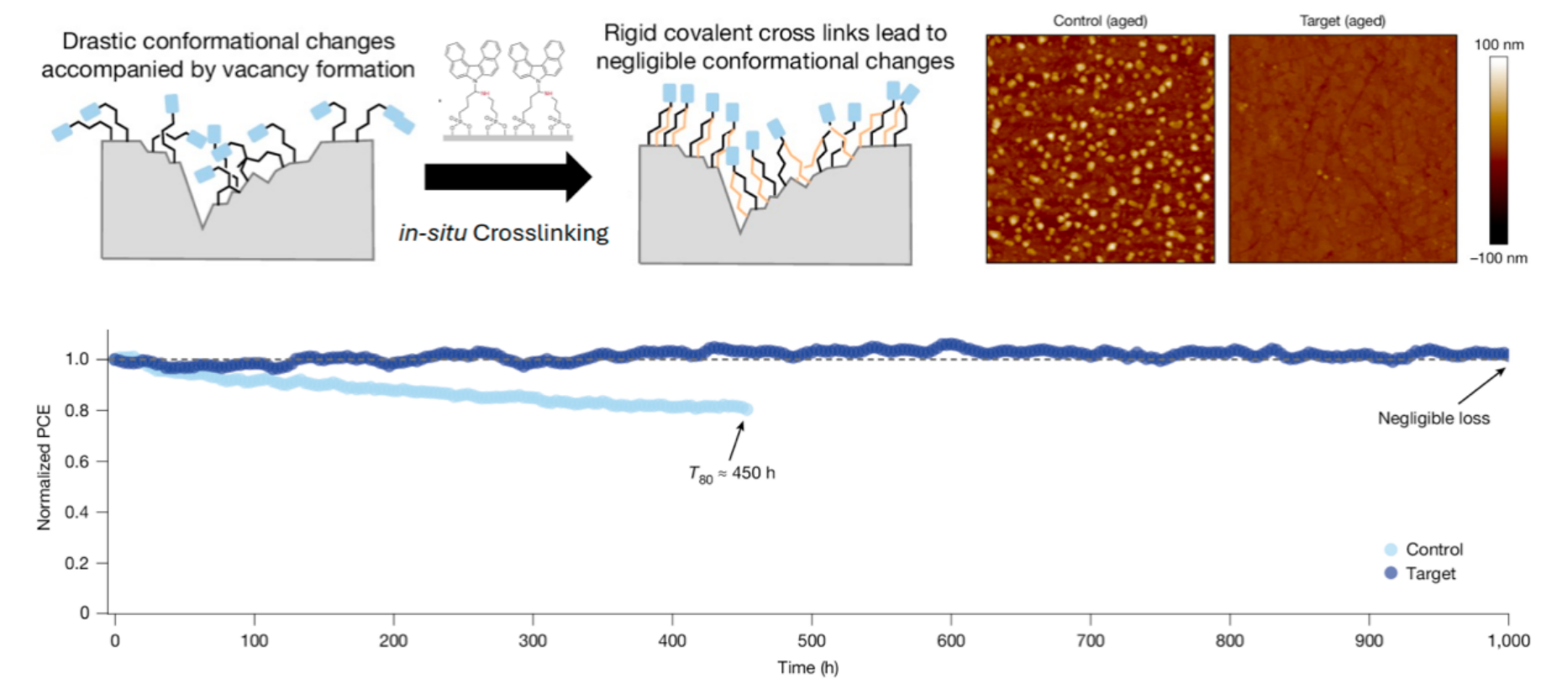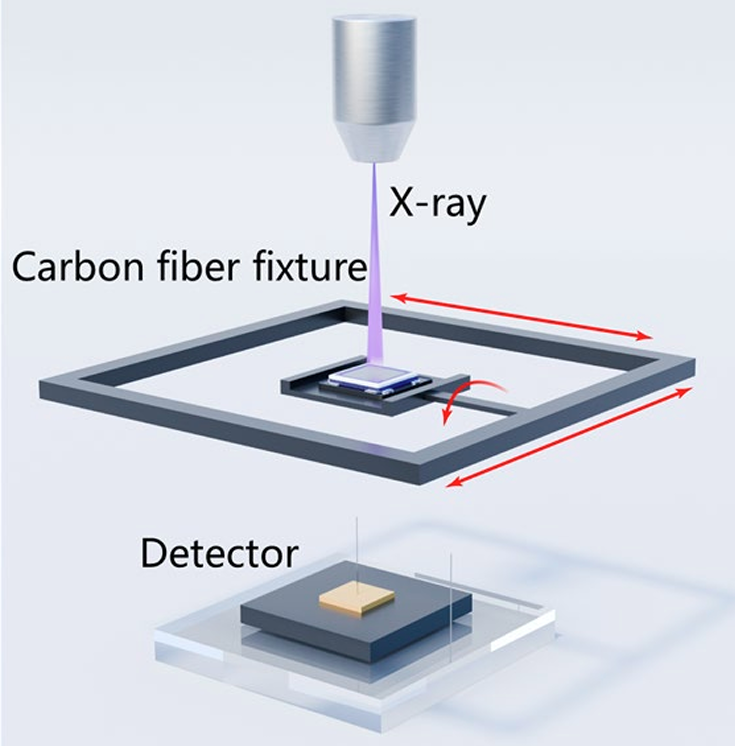
Universal In-Situ Cross-Linking Strategy Enhances Stability of Inverted Perovskite Solar Cells
Hole-selective self-assembled monolayers (SAMs) are ultrathin organic films that play a crucial role in modern optoelectronic devices, particularly in perovskite and silicon-perovskite tandem solar cells. However, their inherent instability often compromises device operational performance, posing a significant barrier to their practical application.
A collaborative team led by Prof. YANG Chunlei and Assoc. Prof. ZHANG Jie from the Shenzhen Institutes of Advanced Technology, Chinese Academy of Sciences, and Prof. Alex K.-Y. Jen from City University of Hong Kong, developed a universal in-situ cross-linking conformational reinforcement strategy for SAM molecules, effectively addresses operational stability issues caused by buried interface degradation in high-efficiency inverted perovskite solar cells.
Their findings were published in Nature on September 17.
In this study, the researchers designed and introduced a novel azide-functionalized SAM molecule, JJ24, featuring an optimized carbon chain length. This innovative molecule enhances the distribution uniformity of the host SAM molecule CbzNaph on transparent conductive oxide (TCO) substrate and effectively suppresses the formation of defects and voids during the self-assembly process.
The azide group in JJ24 can be thermally activated to form in-situ covalent cross-linking with the alkyl chains of CbzNaph molecules, creating a tightly assembled co-SAM layer. This structure improves the preferential orientation of CbzNaph and, by reinforcing the rigidity of its alkyl chain linkers, suppresses the exposure of the TCO substrate surface caused by molecular swing under light and thermal stress. As a result, degradation at the perovskite buried interface is inhibited, and non-radiative recombination losses at the device interface are significantly reduced.
Using this approach, the researchers fabricated inverted perovskite solar cells, achieving a certified power conversion efficiency (PCE) of 26.9%. Remarkably, the devices exhibited zero efficiency degradation after 1,000 hours of continuous operation under ISOS-L-2 testing standards and retained over 98% of their initial PCE after 700 thermal cycles between –40°C and 85°C, representing a top-tier stability and performance in the field.
This study offers a practical strategy to enhance the operational stability of high-efficiency SAM-based devices on rough substrates, with significant implications for advancing the commercialization of inverted perovskite photovoltaics and next-generation perovskite-based tandem solar cells.

Schematic of the SAM molecular cross-linking conformation, device buried interface morphology, and operational stability data. (Image by SIAT)
File Download:

